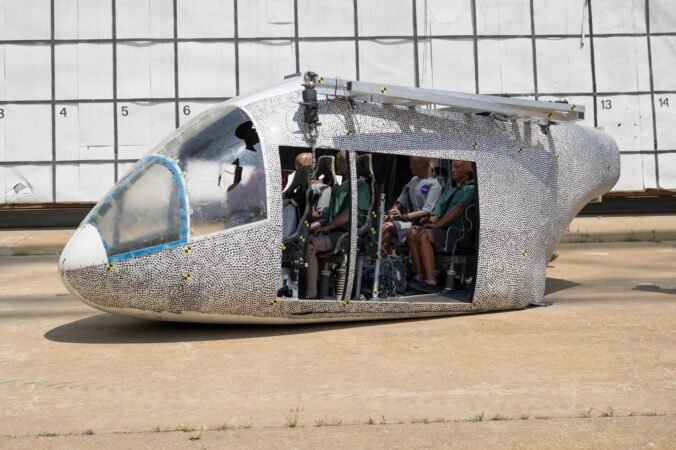Quick Takeaways
-
Material Evaluation for Safety: NASA is investigating air taxi materials to understand their behavior during impacts to enhance passenger safety in crashes.
-
Test Methodology: A full-scale air taxi model was dropped from 35 feet to study the effects of impact, incorporating a 10-degree yaw to align with FAA certification conditions.
-
Predictive Accuracy: Results showed that material failures aligned with computer simulations, confirming the effectiveness of updated models from past tests.
- Industry Insights: Data and lessons learned from these tests will guide the design of safer air mobility aircraft and inform future regulations, enhancing overall crashworthiness before community operation.
NASA Drop Test Supports Safer Air Taxi Design and Certification
NASA continues to push the boundaries of aviation safety. Recently, the agency conducted a significant drop test at Langley Research Center in Hampton, Virginia. This test aims to make air taxis safer for future passengers.
On June 26, researchers released a full-scale aircraft body modeled after an air taxi from a height of about 35 feet. The aircraft crashed in a controlled manner, mimicking the conditions required by the Federal Aviation Administration. This realism is vital as it provides insights into how new materials behave during impact.
Researchers compared the results of this test with data from a previous drop test conducted in late 2022. They focused on materials known for their ability to absorb impact forces effectively. As anticipated, material failures during the drop aligned closely with predictions made by computer simulations. This reinforces the reliability of their design processes.
One innovative feature of the aircraft is its energy-absorbing subfloors. Designed similarly to crumple zones in cars, these subfloors crushed as intended, helping to protect passenger seats during the crash. Additionally, researchers tested battery components by adding weight to simulate real conditions. This method allows for a more precise assessment of how the aircraft handles stress and improves overall safety.
The insights gained from these drop tests will be crucial for manufacturers. They will guide the development of safety regulations for air taxis, ultimately contributing to safer aircraft designs. As the advanced air mobility sector progresses, these tests help ensure that new aircraft can be evaluated thoroughly before flying over populated areas.
NASA’s work falls under the Revolutionary Vertical Lift Technology project, part of its Advanced Air Vehicles Program. By supporting the development of electric air taxis and drones, NASA delivers essential data that advances technology and enhances the quality of life for future travelers. The commitment to safety and innovation in air mobility represents a significant step forward for the aviation industry and the communities it serves.
Discover More Technology Insights
Learn how the Internet of Things (IoT) is transforming everyday life.
Explore past and present digital transformations on the Internet Archive.
SciV1

